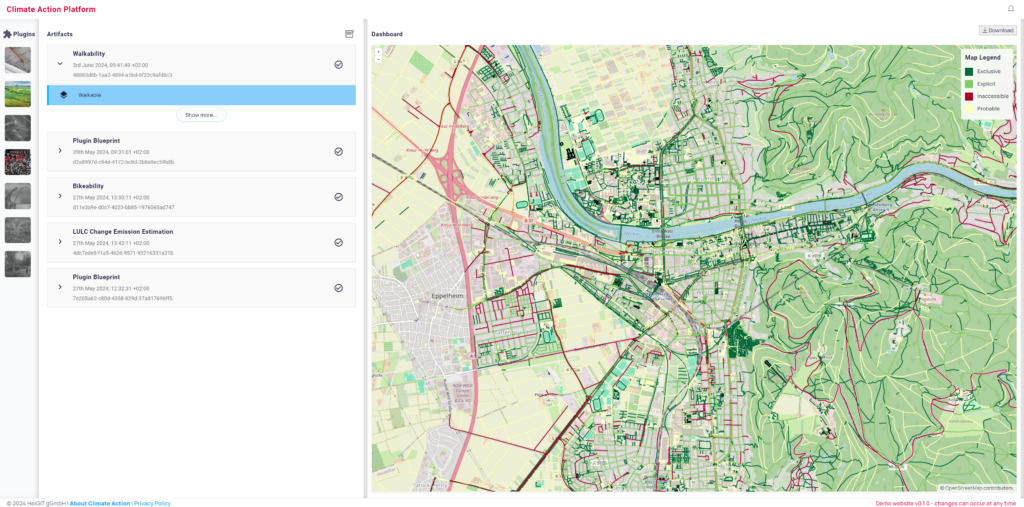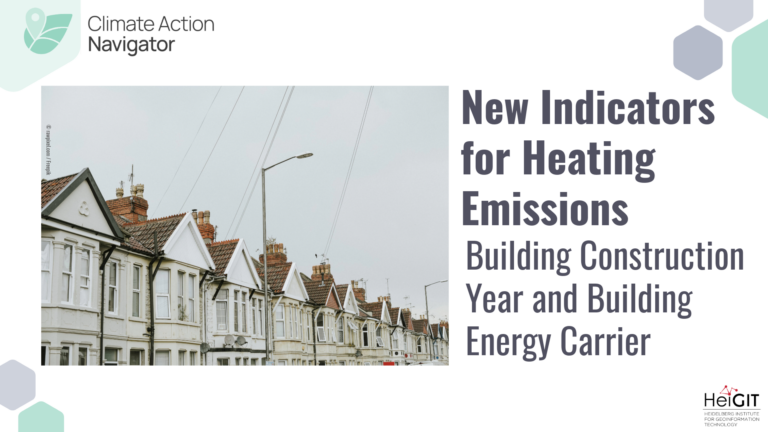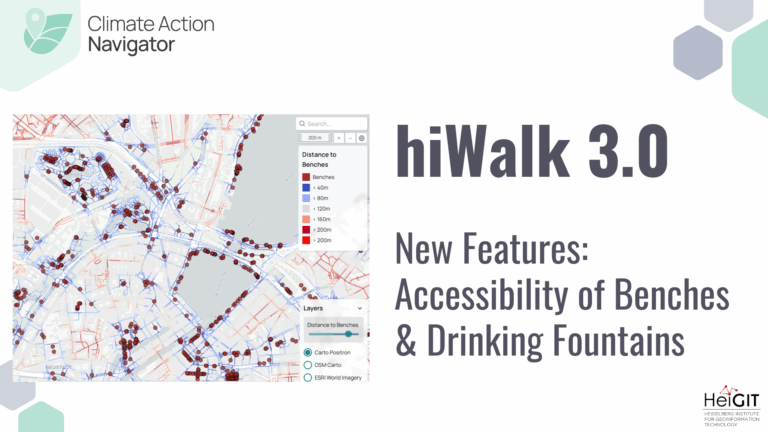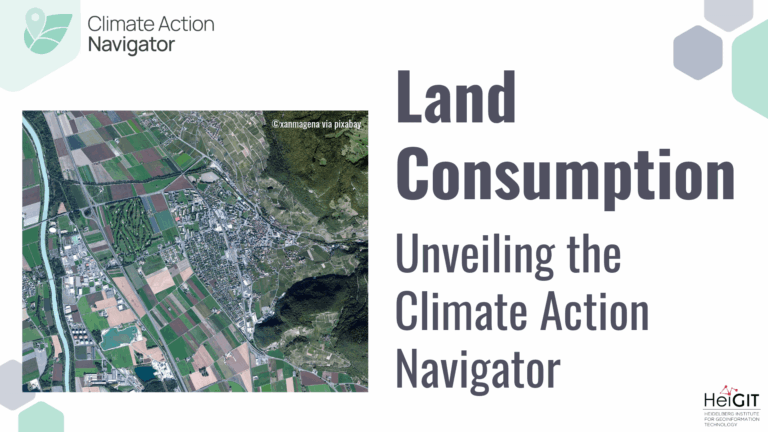At HeiGIT, we are committed to raising awareness about the climate crisis and taking action to support stakeholders with knowledge and actionable know-how to drive the transformation of our society and built environment. In this spirit, we joined forces with PLANUM, an Austrian traffic planning office with extensive expertise in active mobility, particularly walkability. As cities around the world seek to reduce their carbon footprints, the promotion of walkable neighborhoods is becoming a central strategy. But what exactly is walkability, and why is it so important for climate action?
What is Walkability?
Walkability refers to how friendly an area is to walking. It is influenced by factors such as the presence of pedestrian pathways, street safety, proximity of amenities like benches or Cafés, and the overall comfort and attractiveness of the walking environment. A walkable city encourages its residents to opt for walking over commuting by car, regardless of the season or daytime. This results in reduced carbon footprints, higher energy-efficiency, improved public health, and has economic as well as social benefits such as increased economic activity in walkable neighborhoods and more social interactions within the community.
The HeiGIT Walkability Index
The co-development of the walkability index by HeiGIT’s climate action team and experts from PLANUM aims to align the indicator results with pedestrians’ perceived walkability and identify hotspots for action within a city. A key question addressed by the index is: Where are the leverage points to considerably increase the walkability of a given city? Test cases are the cities of Heidelberg (Germany) and Villach (Austria). The index development is based on a vast literature review and intensive exchange with scientific partner organizations. We are actively seeking further partnerships to enhance our platform with other indicators and make greater contributions to climate solutions.
Conclusion
Walkability is more than just a desirable urban feature; it is a vital component of climate action. By prioritizing walkable environments, cities can reduce their carbon footprints, enhance public health, and create vibrant, sustainable communities. As we look towards a future of climate resilience, promoting walkability will be a crucial step in building cities that are not only livable but also environmentally responsible. By focusing on walkability, we can take significant strides towards achieving our climate goals and fostering sustainable urban living.





